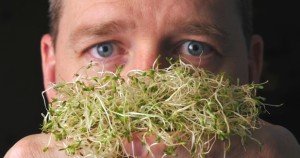Background: A novel pathotype, Shiga toxin–producing Escherichia coli O104:H4, was the cause of a severe outbreak that affected European countries, mainly Germany, in 2011. The effect of different regimens of rifampicin and gentamicin were evaluated to determine possible treatment modes for the novel strain, and to evaluate the SOS response and its effect on toxin release.
 Materials and Methods: Pulsed-field gel electrophoresis (PFGE) was performed on the novel E. coli O104:H4 pathotype and two pre-outbreak E. coli O104:H4 CDC strains. Transcript levels of the stx2 and recA gene (SOS response inducer) were evaluated using quantitative real-time reverse transcriptase polymerase chain reaction (qRT-PCR) in the novel E. coli O104:H4 samples subjected to different regimens of rifampicin and gentamicin. Consequently, reverse passive latex agglutination (RPLA) was used to determine the Stx2 titers in these samples. Western blot was performed to determine the LexA levels (SOS response repressor) in E. coli O104:H4. The efficacy of treatment with antimicrobial agents was assessed in BALB/c mice.
Materials and Methods: Pulsed-field gel electrophoresis (PFGE) was performed on the novel E. coli O104:H4 pathotype and two pre-outbreak E. coli O104:H4 CDC strains. Transcript levels of the stx2 and recA gene (SOS response inducer) were evaluated using quantitative real-time reverse transcriptase polymerase chain reaction (qRT-PCR) in the novel E. coli O104:H4 samples subjected to different regimens of rifampicin and gentamicin. Consequently, reverse passive latex agglutination (RPLA) was used to determine the Stx2 titers in these samples. Western blot was performed to determine the LexA levels (SOS response repressor) in E. coli O104:H4. The efficacy of treatment with antimicrobial agents was assessed in BALB/c mice.
Results: The outbreak and pre-outbreak strains are closely related as shown by PFGE, which demonstrated slight genomic differences between the three strains. The transcription level of the stx2 gene in the new pathotype was 1.41- and 1.75-fold that of the 2009 EL-2050 and 2009 EL-2071 pre-outbreak strains, respectively. Moreover, the transcription level of the stx2 gene in the new pathotype was substantially decreased as a result of treatment with the different concentrations of the antimicrobial agents, but was enhanced when the antibiotics were administered at two subinhibitory levels. RPLA data were in accordance with the qRT-PCR results. E. coli O104:H4 exposed to gentamicin at both sub–minimum inhibitory concentration (MIC) levels led to high transcription levels of the recA gene and lack of expression of the LexA protein, implying that the SOS response was activated. Rifampicin at both sub-MIC levels resulted in low transcript levels of the recA gene, indicating that the SOS response was not induced. In vivo, the highest survival rate in BALB/c mice was observed in the group that was treated with the minimum bactericidal concentration (MBC) of gentamicin.
Conclusion: The use of antimicrobial agents in E. coli O104:H4 infection seems to be effective at the MIC and MBC levels. This provides a promising ground for treatment of E. coli O104:H4.
Effect of rifampicin and gentamicin on Shiga toxin 2 expression level and the SOS response in Escherichia coli O104:H4
Foodborne Pathogens and Disease. January 2015, 12(1): 47-55
Fadlallah Sukayna M., Rahal Elias A., Sabra Ahmad, Kissoyan Kohar A.B., and Matar Ghassan M.
